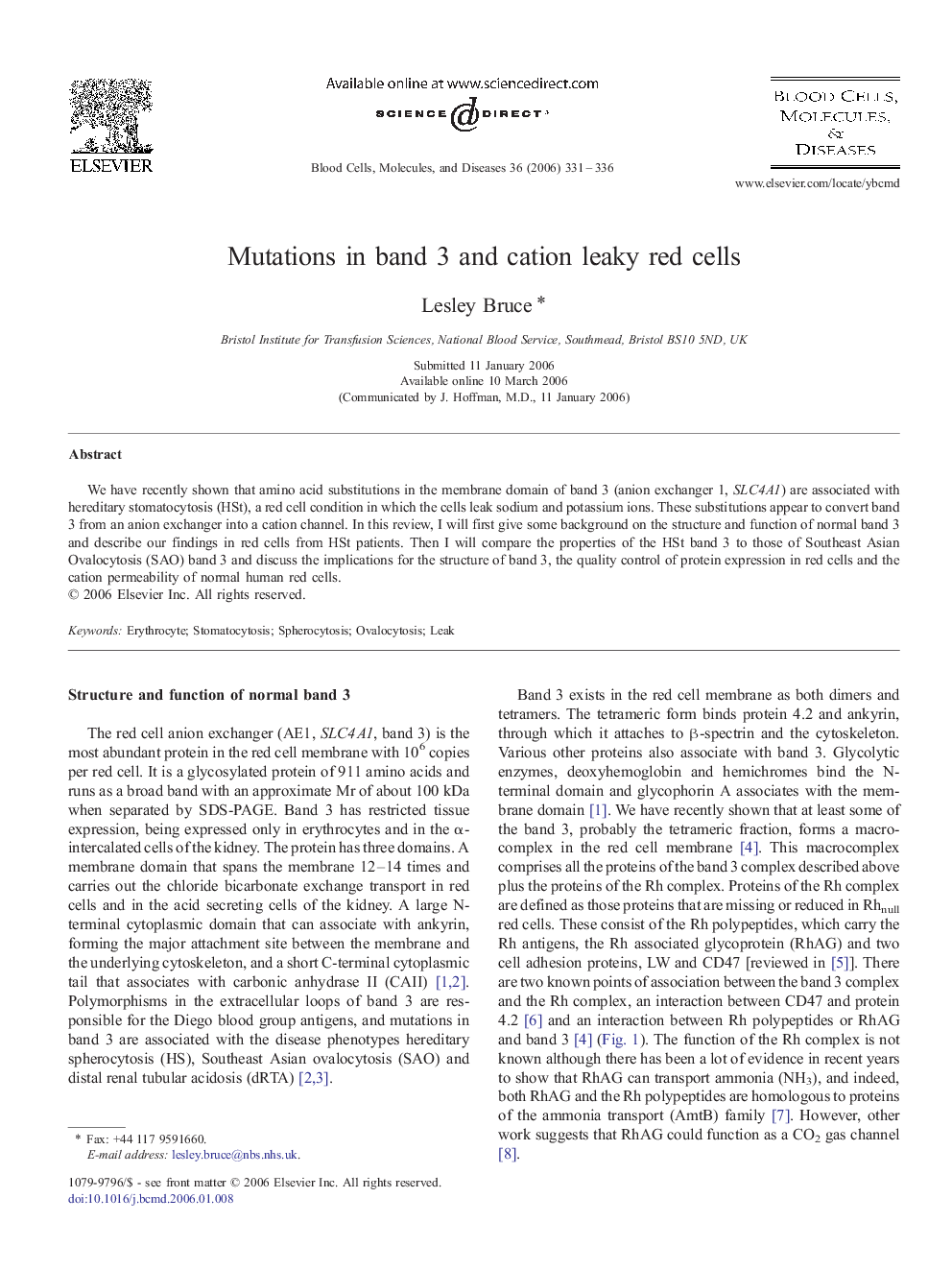| Article ID | Journal | Published Year | Pages | File Type |
|---|---|---|---|---|
| 2828308 | Blood Cells, Molecules, and Diseases | 2006 | 6 Pages |
Abstract
We have recently shown that amino acid substitutions in the membrane domain of band 3 (anion exchanger 1, SLC4A1) are associated with hereditary stomatocytosis (HSt), a red cell condition in which the cells leak sodium and potassium ions. These substitutions appear to convert band 3 from an anion exchanger into a cation channel. In this review, I will first give some background on the structure and function of normal band 3 and describe our findings in red cells from HSt patients. Then I will compare the properties of the HSt band 3 to those of Southeast Asian Ovalocytosis (SAO) band 3 and discuss the implications for the structure of band 3, the quality control of protein expression in red cells and the cation permeability of normal human red cells.
Related Topics
Life Sciences
Biochemistry, Genetics and Molecular Biology
Molecular Biology
Authors
Lesley Bruce,
